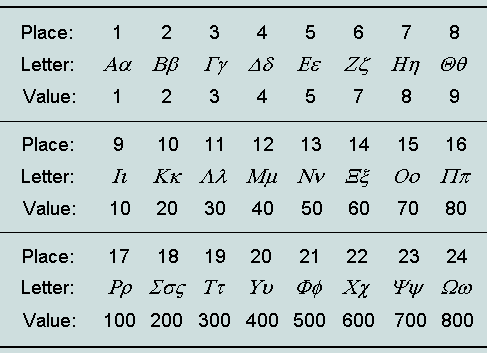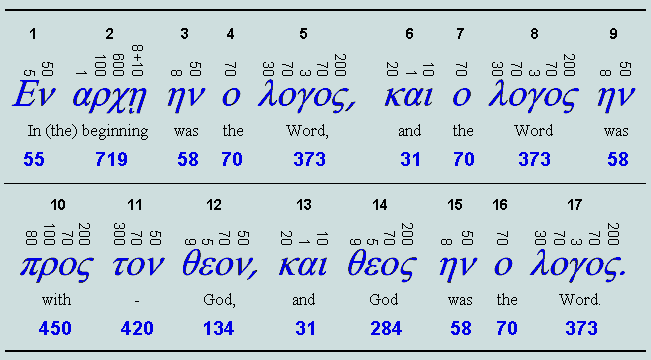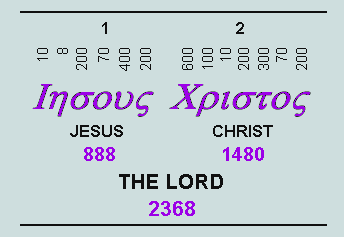
Appendix 3 - The Numerical Interpretation of Greek Words
Here is the Greek scheme - introduced circa 600 BC:

The Greek scheme of alphabetic numeration
This scheme was instituted before the Hebrew and dates from c600BC. There are 24 letters - presented here as uppercase/lowercase pairs. Observe, (a) that because the values 6 and 90 were represented by non-alphabetic characters, they do not feature in this table, and (b) that the character occupying the 18th position ('sigma') is the only one possessing an end-form. There are two applications of particular interest - the first involving John 1:1 and the second, the Lord's name and title as they appear (nominative case) in the New Testament (interestingly, also in the Septuagint - a Greek translation of the Hebrew of the Old Testament - c300BC!). The numerical equivalents of the respective words - the sums of their constituent letters - are here referred to as their characteristic values, or CVs.

The numerical expression of John 1:1
Here we read from left to right - the17 words comprising a total of 52 letters. Observe that the last letter of the second word is subscripted by another, viz iota, this being the second element of a long vowel dipthong. In fact, therefore, the word has 5 letters; hence the entry "8 + 10" above the dipthong - 8 and 10 being the respective values of letters 4 and 5. The CV for the verse is 3627.

The numerical expression of "The Lord"
To summarize:
Genesis 1:1, the Bible's first verse, has 7 words and 28 letters and is represented numerically by the set of CVs {913, 203, 86, 401, 395, 407, 296} and their sum, 2701
Genesis 1:2 has 12 words and 52 letters and is represented numerically by the set of CVs {302, 420, 411, 19, 334, 240, 451, 220, 86, 728, 240, 95} and their sum 3546
John 1:1 (restating the theme of Genesis 1:1 - the Creation) has 17 words and 52 letters and is represented by the set of 17 CVs {55, 719, 58, 70, 373, 31, 70, 373, 58, 450, 420, 134, 31, 284, 58, 70, 373} and their sum, 3627
The Creator's name and title are represented by the CVs {888, 1480} and their sum, 2368; 13 letters are involved
Vernon Jenkins MSc
2006-01-28